|
|
Advertisement:
|
|
Comparing VelociRaptor, SSD and RAM Drive |
|
Join the community - in the OCAU Forums!
|
Benchmarks Continued, Conclusions
GTA IV: Episodes From Liberty City
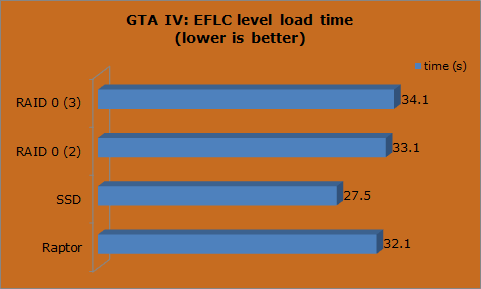
Perhaps GTA IV’s directory structure favours seek times over raw throughput, as the SSD maintains the 16% advantage over the Raptor, whilst the RAID setups suffer a tiny bit, probably from the extra CPU cycles needed to manage the controller.
S.T.A.L.K.E.R.: Call of Pripyat Benchmark
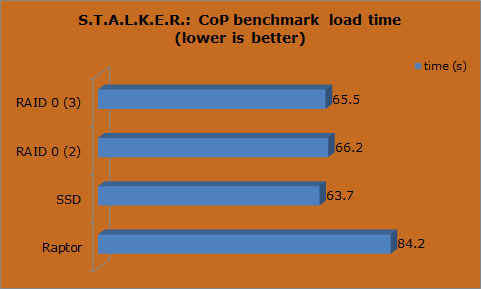
This free benchmark sees the SSD double its advantage over the Raptor to 32%. The RAID setups finally show some might, and both are within 4% of the SSD.
Crysis: WARHEAD
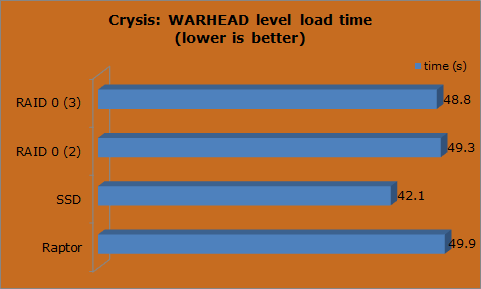
Another game yields another handy win for the SSD, this time around 19%. The RAID 0 setups fail to bring any noticeable benefits.
The RAM Disk
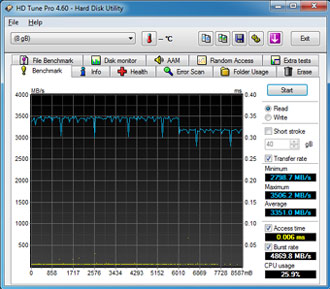 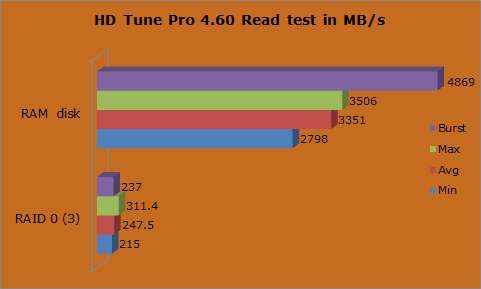
The HD Tune result is perfectly illustrative of the night-and-day discrepancy between the two alternatives.
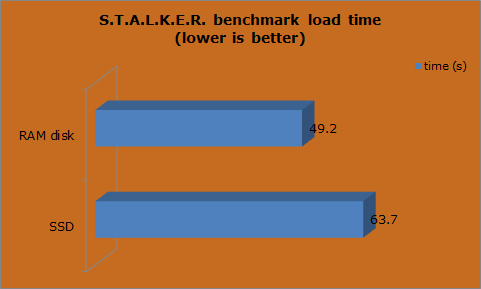 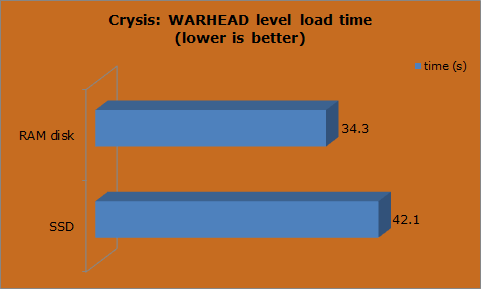
The “real-world” results from S.T.A.L.K.E.R. and Crysis: WARHEAD brings the imbalance into perspective, however, and reiterates the reality of system bottlenecks. Even so, the RAM disk cuts 30% off the S.T.A.L.K.E.R. load time and 23% from the Crysis: WARHEAD load time.
A keen reader might have noticed there is no GTA IV: EFLC results for the RAM disk. Rockstar’s game requires almost 16GB to install, so unless you have a triple-channel 24GB Core i7 setup or a server board, it’ll have to stay on the traditional hard drive.
Of course, one of the perks of a RAM disk is its ability to scale in performance. If you’re the sort that loves nothing more than to spend hours tweaking RAM settings, you could end up with even more performance than the already zippy RAM entails. A rushed (and barely stable) boost of RAM frequency to 1700MHz chopped a further two seconds off the S.T.A.L.K.E.R. benchmarks load time.
Summary
SSD’s are coming thick and fast in 2010, but the old dogs of the spinning platter variety are still untouchable for value. Heading the pack is the VelociRaptor, and if you have the means to string a couple together in a RAID array you can sometimes match the performance of an SSD, whilst enjoying a far greater storage capacity. Of course that will consume more power, produce more heat, and since it’s probably best to go for a dedicated RAID controller, the value proposition equals out somewhat.
A RAM disk is a little exotic, but for ultimate speed it is, at the moment, unbeatable. Loading up your machine with as much RAM as possible is something that is rarely a bad thing anyway, so even if your RAM disk usage fades there will undoubtedly be something else you can do with those speedy gigabytes.
Thanks to AMD, Western Digital and Kingston for providing samples.
|
|
Advertisement:
All original content copyright James Rolfe.
All rights reserved. No reproduction allowed without written permission.
Interested in advertising on OCAU? Contact us for info.
|

|


